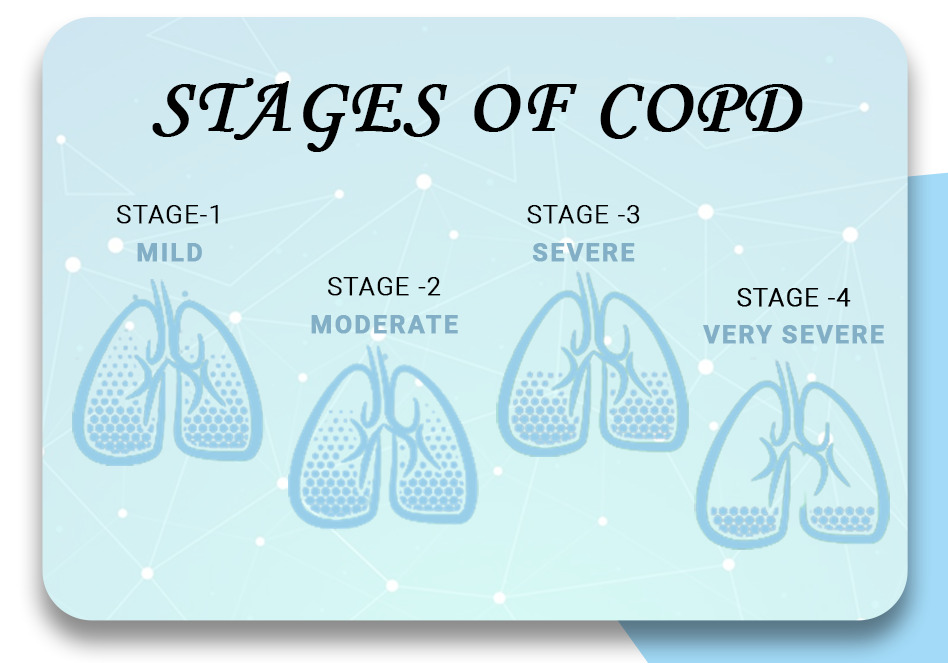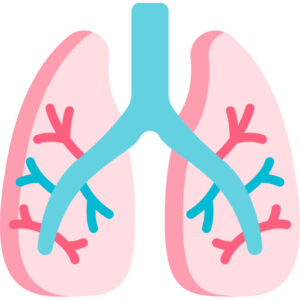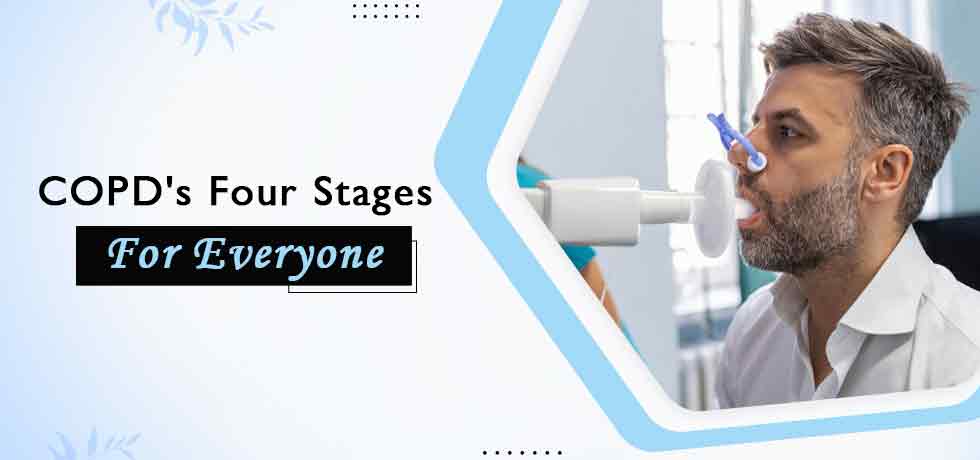COPD is a progressive lung disease that affects millions of people on this planet. Therefore, in its GOLD Global Initiative for Chronic Obstructive Lung Disease, the organization as mentioned earlier offers a four-phase classification COPD severity system.
For this reason, we’ll take a look at COPD’s Four Stages for Everyone in detail and then proceed to discuss their symptoms and treatments. Understanding COPD’s progression helps people with the illness, family members who care for them, and teachers in the medical field handle it better and appropriately.
GOLD System Classifies COPD Gravity
The GOLD system has been established as one of the most popular OS to assess impairment categorized by airflow limitation in COPD. By spirometry, the sample is classified as follows: FEV 1 and where RENOVATE lung bypass.
The parameters that are used to assess the severity of Chronic Obstructive Pulmonary Disease in the GOLD system include predicted FEV1% and the ratio of spirometric lung volume between FVC, which depends on the rate at the early phase (FEV).
Patients are categorized into four groups: Mild (FEV1≥80%), moderate ( FEV ≤50-79%) severe, severe(62.3), and very severe Classifications are proposed based on fem one values including patients aged between 4 to the pa sponsored by p Convention of capacity. The extent of the airflow limitation corresponds to a higher category and the patient’s quality of life compromises and influences on higher general health.
COPD Stages
Stage 1: Mild
In the early stage of COPD, individuals may not be aware of any symptoms, or they may experience mild respiratory issues that are often dismissed as typical signs of aging. The GOLD system categorizes this stage as mild, with a FEV1/FVC ratio of less than 70% and FEV1 greater than or equal to 80% predicted.
Symptoms:
- Occasional shortness of breath, especially during physical activity
- Mild chronic cough
- Rare respiratory infections
Treatment:
- Smoking cessation: The most effective intervention to slow the progression of Chronic Obstructive Pulmonary Disease is quitting smoking.
- Pulmonary rehabilitation: Exercise programs and education to improve lung function and overall well-being.
- Bronchodilators: Medications that help open the airways, making breathing easier.
Stage 2: Moderate
As COPD progresses to the moderate stage, symptoms become more noticeable and may interfere with daily activities. The FEV1/FVC ratio remains less than 70%, but the FEV1 drops to between 50% and 79% predicted. There is a medication called Cenforce 150 that men use to treat erectile dysfunction.
Symptoms:
- Increased shortness of breath, even during routine activities
- Chronic cough with sputum production
- Frequent respiratory infections
Treatment:
- Smoking cessation remains a top priority.
- Bronchodilators become more critical, and long-acting bronchodilators may be introduced.
- Inhaled corticosteroids: Anti-inflammatory medications to reduce airway inflammation.

Stage 3: Severe
In the severe stage of COPD, daily life becomes significantly impacted by the symptoms. The FEV1/FVC ratio is still less than 70%, and the FEV1 drops to 30%-49% predicted.
Symptoms:
- Severe shortness of breath, even with minimal physical exertion
- Chronic cough with persistent sputum production
- Frequent exacerbations and hospitalizations
Treatment:
- Smoking cessation continues to be crucial.
- Long-acting bronchodilators and inhaled corticosteroids are often prescribed.
- Oxygen therapy: Supplemental oxygen may be necessary to maintain adequate oxygen levels in the blood.
Stage 4: Very Severe
In the very severe stage, COPD severely impacts the individual’s quality of life, and the FEV1 is less than 30% predicted or less than 50% predicted with chronic respiratory failure. To overcome ED, take Fildena 100 to increase your performance in bed.
Symptoms:
- Extreme shortness of breath, even at rest
- Limited physical activity due to respiratory distress
- Frequent exacerbations and hospitalizations
Treatment:
- Smoking cessation remains vital.
- Long-term oxygen therapy is often required.
- Surgical options: In some cases, lung transplantation or lung volume reduction surgery may be considered.
👨🏻⚕️ Emergency Treatment
Immediate medical care is needed if:
⤷ you have bluish or gray fingernails or lips, as this indicates low oxygen levels in your blood
⤷ you have trouble catching your breath or can’t talk
⤷ you feel confused, muddled, or faint
⤷ your heart is racing
What Is The Average Lifespan Of A Person With COPD?
The average lifespan of a person with COPD varies depending on various factors, including the severity of the disease, overall health, and lifestyle choices. While COPD is a progressive condition with no cure, early diagnosis, and proper management can significantly improve the prognosis. On average, individuals with COPD may have a reduced lifespan compared to those without the condition. However, advancements in medical treatments and interventions can help extend and improve the quality of life for individuals with COPD.
Early diagnosis of COPD is crucial because it allows individuals to start treatment earlier, which can slow down the progression of the disease and improve their quality of life. Proper management, including smoking cessation, regular check-ups, and medication adherence, can help individuals with COPD breathe easier, reduce the number of exacerbations, and enhance their overall well-being.
By identifying COPD at an early stage and effectively managing it, individuals with COPD can live a fulfilling life, participate in daily activities, and reduce the risk of complications and hospitalizations. You will be able to obtain an excellent erection with the assistance of Cenforce 200.
Is It Possible To Stop COPD From Getting Worse?
 While COPD is a chronic and progressive disease, there are measures individuals can take to slow its progression and improve their quality of life. Smoking cessation is the single most effective intervention to halt the advancement of COPD. Quitting smoking can significantly slow the decline in lung function and reduce the risk of exacerbations.
While COPD is a chronic and progressive disease, there are measures individuals can take to slow its progression and improve their quality of life. Smoking cessation is the single most effective intervention to halt the advancement of COPD. Quitting smoking can significantly slow the decline in lung function and reduce the risk of exacerbations.
Additionally, adhering to a comprehensive treatment plan prescribed by healthcare professionals is crucial. This may include medications such as bronchodilators and inhaled corticosteroids, pulmonary rehabilitation, and oxygen therapy in advanced stages. Lifestyle modifications, such as regular exercise, a healthy diet, and avoiding environmental pollutants, can also contribute to slowing the progression of Chronic Obstructive Pulmonary Disease.
By following a comprehensive treatment plan and adhering to medication, individuals with COPD can experience improved breath, fewer exacerbations, and enhanced overall well-being. Additionally, quitting smoking, engaging in regular exercise, maintaining a healthy diet, and avoiding environmental pollutants can contribute to slowing down the progression of COPD. The powerful medicine Vidalista 20 gives you erections that last a long time.
Bottom Line
COPD’s four stages provide a framework for understanding the progression of this respiratory condition and guide healthcare professionals in developing appropriate treatment plans. Early diagnosis, smoking cessation, and adherence to medical interventions are key to managing COPD effectively.
Individuals with Chronic Obstructive Pulmonary Disease and their caregivers should work closely with healthcare providers to create a personalized care plan that addresses their specific needs and maximizes their quality of life. While COPD is a challenging condition, proactive management can make a significant difference in the journey of those affected.






